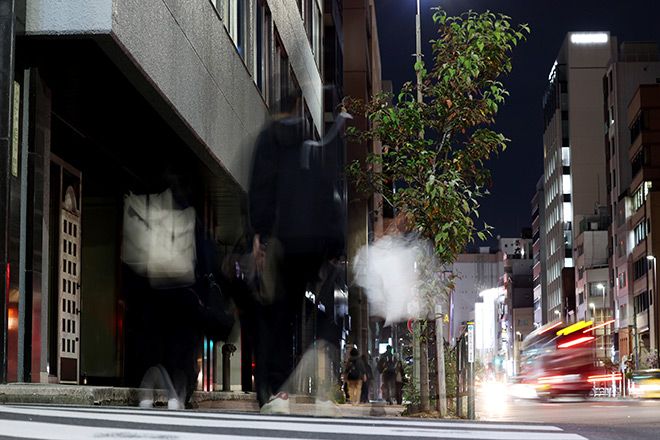Legal changes sought to punish customers of prostitutes – 朝日新聞

Report on Child Trafficking Incident in Tokyo and Implications for Sustainable Development Goals
Incident Summary and Violation of Core Human Rights
A significant human trafficking case has been identified in Tokyo, involving the exploitation of a 12-year-old Thai national. This incident represents a severe breach of international human rights and directly contravenes several United Nations Sustainable Development Goals (SDGs).
- Victim Profile: A 12-year-old girl from Thailand.
- Nature of Exploitation: Forced labor and sexual services at a massage establishment in Bunkyo Ward, Tokyo.
- Duration: The ordeal lasted for approximately three months.
- Circumstances: The child was brought to Japan by her mother on a short-term visa, subsequently abandoned, and forced into labor.
- Legal Action: The shop manager, Masayuki Hosono, 51, was arrested for violating the Labor Standards Law. The case is being investigated as human trafficking.
Direct Contravention of Sustainable Development Goals
SDG 8: Decent Work and Economic Growth
The case is a flagrant violation of Target 8.7, which calls for immediate measures to eradicate forced labor, end modern slavery and human trafficking, and eliminate the worst forms of child labor.
- Forced Labor: The girl was compelled to work against her will.
- Child Labor: As a 12-year-old, her employment was illegal and constitutes one of the worst forms of child labor.
- Human Trafficking: The circumstances of her arrival, abandonment, and subsequent exploitation align with the U.N. definition of trafficking in persons, particularly concerning a minor.
SDG 16: Peace, Justice and Strong Institutions
This incident undermines Target 16.2, which aims to end abuse, exploitation, trafficking, and all forms of violence against children. The systemic failures that allowed this situation to occur highlight challenges in institutional strength and justice.
- Exploitation of a Child: The case is an egregious example of the child exploitation that SDG 16 seeks to eliminate.
- Institutional Response: While the Metropolitan Police Department and the Tokyo Regional Immigration Services Bureau intervened, the case exposes vulnerabilities that traffickers exploit. The investigation into a suspected intermediary organization points to the need for stronger institutional capacity to dismantle criminal networks.
- Justice System Scrutiny: The effectiveness of Japan’s legal framework in delivering justice commensurate with the gravity of such crimes is under review.
SDG 5: Gender Equality
The sexual exploitation of a young girl is a direct assault on Target 5.2, which seeks to eliminate all forms of violence against women and girls, including trafficking and sexual exploitation. Global data indicates that females constitute the majority of trafficking victims, often for sexual exploitation, underscoring the gendered nature of this crime.
National Context: Japan’s Efforts and Shortcomings in Combating Human Trafficking
Statistical Overview
Recent data from Japan’s council for human trafficking countermeasures reveals an ongoing challenge:
- Victims in 2024: 66 individuals were protected.
- Gender Disparity: 57 of the victims were female, aligning with global trends and highlighting the relevance of SDG 5.
- Child Victims: 41 victims were under the age of 18, a critical concern for SDG 16.2.
International Criticism and Legislative Gaps
Despite legislative efforts, Japan faces international criticism for its anti-trafficking measures, indicating a gap in achieving the robust institutional framework envisioned by SDG 16.
- U.S. State Department Report (2025): Criticized Japan for imposing “insufficient” penalties on convicted offenders and failing to thoroughly investigate signs of trafficking involving children.
- U.N. Human Rights Committee (2022): Expressed concern that penalties for trafficking-related crimes in Japan are not commensurate with their severity.
While Japan revised its Criminal Code in 2005 to criminalize human trafficking and is replacing the controversial Technical Intern Training Program, persistent criticism suggests that these measures have not been sufficient to fully align with global standards and SDG targets.
Analysis of Sustainable Development Goals in the Article
1. Which SDGs are addressed or connected to the issues highlighted in the article?
The article highlights several issues that directly connect to the following Sustainable Development Goals (SDGs):
-
SDG 5: Gender Equality
The case revolves around a 12-year-old girl forced into sexual exploitation. The article explicitly states that the majority of human trafficking victims are female (“In 2024, there were 66 victims, 57 of whom were women” and globally, “Females, including children, accounted for 61 percent of the victims”). This highlights the gendered nature of this form of violence and exploitation, which is a core concern of SDG 5.
-
SDG 8: Decent Work and Economic Growth
The article details a case of forced labor and the worst forms of child labor. The 12-year-old girl was “forced to work at a ‘massage parlor'” in violation of the “Labor Standards Law’s minimum working age provisions.” The article also mentions the broader context of forced labor, citing an International Labor Organization estimate of “27.6 million victims of forced labor, including sexual exploitation.” These issues are central to SDG 8’s aim of promoting safe and secure working environments and eradicating forced labor and child labor.
-
SDG 16: Peace, Justice and Strong Institutions
This goal is central to the article, which describes a case of “potential human trafficking,” a severe crime and a form of violence against a child. The entire narrative involves law enforcement (“Metropolitan Police Department”), the justice system, and immigration authorities (“Tokyo Regional Immigration Services Bureau”). The article also discusses Japan’s legal framework, such as the 2005 revision to the Criminal Code to create the crime of human trafficking, and critiques its effectiveness, citing reports from the U.S. State Department and the U.N. Human Rights Committee about “insufficient penalties.” This directly relates to SDG 16’s focus on ending violence against children and promoting justice.
2. What specific targets under those SDGs can be identified based on the article’s content?
Based on the issues discussed, the following specific SDG targets are directly relevant:
-
Target 5.2: Eliminate all forms of violence against all women and girls in the public and private spheres, including trafficking and sexual and other types of exploitation.
The ordeal of the 12-year-old Thai girl, who was abandoned and forced to provide “sexual services to male customers,” is a clear example of trafficking and sexual exploitation, which this target aims to eliminate.
-
Target 8.7: Take immediate and effective measures to eradicate forced labour, end modern slavery and human trafficking and secure the prohibition and elimination of the worst forms of child labour… and by 2025 end child labour in all its forms.
The article’s focus on a 12-year-old being “forced to work” against her will, the police treating the case as “potential human trafficking,” and the violation of minimum working age laws directly aligns with every component of this target.
-
Target 16.2: End abuse, exploitation, trafficking and all forms of violence against and torture of children.
As the victim is a 12-year-old child, her experience of being trafficked and sexually exploited is precisely the kind of violence and abuse that Target 16.2 is designed to end. The article’s shock value (“I cannot recall a case of human trafficking this egregious”) underscores the severity of the violence against this child.
3. Are there any indicators mentioned or implied in the article that can be used to measure progress towards the identified targets?
Yes, the article mentions and implies several indicators that can be used to measure progress:
-
Number of identified victims of human trafficking, disaggregated by age and sex.
The article provides explicit data that serves as this indicator. It states, “In 2024, there were 66 victims, 57 of whom were women… Forty-one victims were under 18.” It also provides historical data for Japan and global figures (“about 74,000 victims of human trafficking were identified worldwide in 2022”), which are used to track the prevalence of the problem.
-
Effectiveness of the justice system in prosecuting trafficking crimes.
This is an implied indicator. The article discusses Japan’s legal response, including the 2005 revision to the Criminal Code. However, it also points to a lack of progress by citing criticism from a U.S. State Department report that Japan imposes “‘insufficient’ penalties, such as suspended sentences and fines, on many convicted offenders.” The U.N. Human Rights Committee’s concern that “penalties for trafficking-related crimes were not commensurate with the gravity of the offenses” also points to the need to measure the strength and enforcement of legal frameworks as an indicator of progress.
4. Table of SDGs, Targets, and Indicators
| SDGs | Targets | Indicators |
|---|---|---|
| SDG 5: Gender Equality | 5.2: Eliminate all forms of violence against all women and girls, including trafficking and sexual exploitation. | Number of trafficking victims disaggregated by sex (The article notes 57 of 66 victims in Japan in 2024 were women, and 61% of global victims were female). |
| SDG 8: Decent Work and Economic Growth | 8.7: Eradicate forced labour, end modern slavery and human trafficking, and eliminate the worst forms of child labour. | Prevalence of child labor and forced labor (The case of the 12-year-old forced to work is a direct example; the article also cites an ILO estimate of 27.6 million victims of forced labor). |
| SDG 16: Peace, Justice and Strong Institutions | 16.2: End abuse, exploitation, trafficking and all forms of violence against children. | Number of child trafficking victims (The article states 41 of 66 victims in Japan in 2024 were under 18) and the effectiveness of the justice system in penalizing offenders (The article cites criticism of “insufficient penalties”). |
Source: asahi.com
What is Your Reaction?
 Like
0
Like
0
 Dislike
0
Dislike
0
 Love
0
Love
0
 Funny
0
Funny
0
 Angry
0
Angry
0
 Sad
0
Sad
0
 Wow
0
Wow
0
















































:focal(1500,1000)/https://media.globalcitizen.org/a6/9a/a69a4720-d8a1-4715-b596-18738d03c05c/rotary_polio_hero_image.jpg?#)







/countries/sri-lanka/photo-credit---dmc-sri-lanka.tmb-1200v.jpg?sfvrsn=dc298bcc_1#)







/https://media.globalcitizen.org/a4/38/a4384948-9c8e-4a4b-a98d-87e69fbd2f66/nadine-e-drzymtae-va-unsplash.jpg?#)









